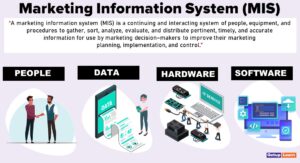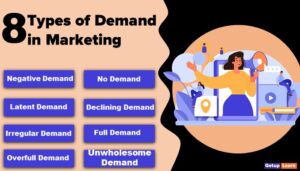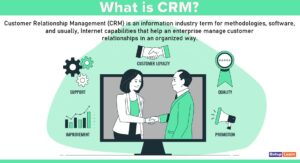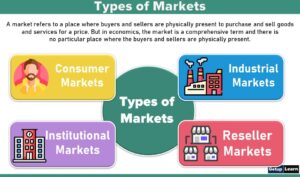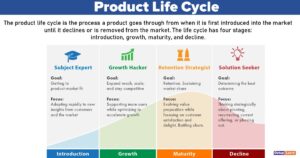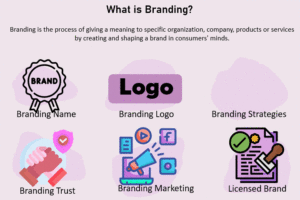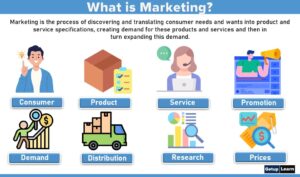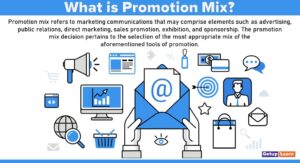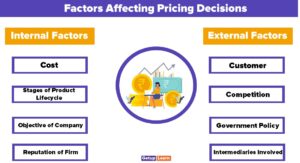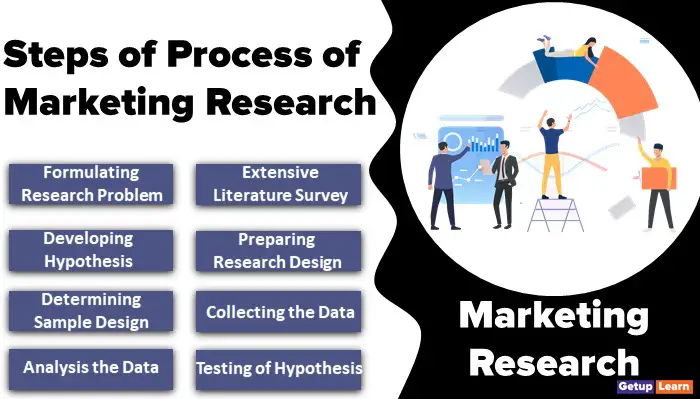
Table of Contents
- 1 Process of Marketing Research
- 2 Objective of Market Research
-
3 Types of Marketing Surveys
- 3.1 Market Description Surveys
- 3.2 Market Segmentation Surveys
- 3.3 Stage in Purchase Process
- 3.4 Customer Intention
- 3.5 Customer Attitudes and Expectations Surveys
- 3.6 Customer Trust Loyalty
- 3.7 New Product Concept Analysis Surveys
- 3.8 New Product Acceptance and Demand Surveys
- 3.9 Habits and Uses Surveys
- 3.10 Product Fulfilment Surveys
- 3.11 Product Positioning Surveys
- 3.12 Brand Equity Analysis Surveys
- 3.13 Advertising Value Identification and Analysis Surveys
- 3.14 Advertising Message Effectiveness Surveys
- 3.15 Sales Force Effectiveness Surveys
- 3.16 Sales Lead Generation Surveys
- 3.17 Customer Service Surveys
- 3.18 Customer Service Representative (CSR) Surveys
- 3.19 Sales Forecasting and Market Tracking Surveys
- 3.20 Price Setting Surveys and Elasticity of Demand Analysis
- 4 Applications of Marketing Research
- 5 FAQ Related to Process of Marketing Research
Process of Marketing Research
Marketing Research is the function that links the consumer, customer, and public to the marketer through information used to identify and define marketing opportunities and problems; generate, refine, and evaluate marketing actions; monitor marketing performance; and improve understanding of marketing as a process.
Marketing research specifies the information required to address these issues, designs the method for collecting information, manages and implements the data collection process, analyzes the results, and communicates the findings and their implications.
Following are the steps of the process of marketing research:
- Formulating Research Problem
- Extensive Literature Survey
- Developing Hypothesis
- Preparing Research Design
- Determining Sample Design
- Collecting the Data
- Analysis the Data
- Testing of Hypothesis
- Writing Interpretation
- Preparation of Research Report
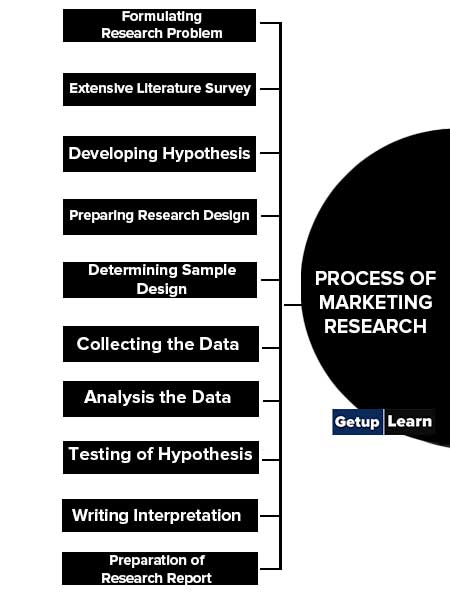
Formulating Research Problem
Any research should start with a problem. A research problem is the basic and initial stage of the research process which is going to be analyzed and given a solution. Hence, formulating the research problem plays a key role in deciding the significance and needs of the research.
The researches may find out the research problem with the help of his own interest, subject knowledge, or discussion with experts and field of specialization. The research problem is nothing but a topic. For example: “A study on Consumer Awareness towards the consumer protection Act, 1986 in Salem district”.
Extensive Literature Survey
A review of literature helps to acquire in-depth knowledge of a particular topic. It is the study of related concepts and how they will be related or deviated from the present research problem. The researchers may refer to various published and unpublished sources to collect the review of the literature.
A literature survey also helps to meet the research gap which is the ultimate aim of the research particularly to differentiate the current problem from the previous problem. A review of the literature provides detailed knowledge of previous studies carried out on that subject.
The literature on a subject matter of research can be had from the available standard books, periodicals, journals, published and unpublished research works, conference proceedings, Government reports, etc. There is a methodology for writing the review of the literature. It is called scholarly writing of the report.
Developing Hypothesis
A hypothesis is a statement or assumption which is proved or disproved with the help of analysis selecting and developing a hypothesis becomes an important part of the research. The hypothesis may be developed with the help of the experts, in-depth knowledge, and trends of the research.
A good hypothesis will provide a better result and it will reflect the entire research. Formulating the hypothesis alone is an important task of the research which helps to understand the relationship between the variables and also provides scientific proof of the result.
Preparing Research Design
Research design is the blueprint of the research which consists of requirements of cost, time, manpower, and another resource to complete the research in a prescribed period. It is the art of drafting the research activities in a systematic manner with the help of available resources.
A good research design leads to avoiding unnecessary delays and drawbacks. Once the researcher drafted the research design, half of the research process has been completed. The researcher should think about the requirements of the resources like man material, money, and time.
Determining Sample Design
The sample is considered as the source of data collection while using the primary data. Sample means a population where the data is going to be collated for the research study. The selection of the sampling depends upon the nature of the study and the availability of the data.
The sample design includes the Type of sampling, methods of selection of the sample, sample size, etc. selection of the appropriate and scientific sample leads to the research study as reliable, viable, and applicable.
Collecting the Data
Data is the heart of any kind of research activity, without data research is meaningless. Hence there should be an appropriate method for collecting the data. Data collection is not an easy task which consists of various formalities and producers.
Data can be collected from primary sources such as questionnaire methods, interview schedules, observations, etc., and secondary sources such as published and unpublished reports, records, websites, etc.
Analysis the Data
The mere collection of data will not produce any result or information. It should be properly classified, arranged, and tabulated. Tabulated data should be analyzed with the help of statistical tools like correlation, standard deviation, chi-square, trend analysis percentage, etc. Analysis of the data describes the numerical information and it should be converted into a qualitative statement.
Testing of Hypothesis
Based on the data available and analysis, the formulated hypothesis should be tested. T-test and F-test may be applied. If the calculated value of less than the table value it may be accepted and the hypothesis is to be proved, otherwise it is said to be rejected.
Writing Interpretation
Writing interpretation will be the research report in pleasure and in a good manner. Appropriate and suitable interpretation with easy and simple language will help to understand the viewers of the research report. Extra care and skill are needed to write the interpretation.
Preparation of Research Report
It is the final stage of the research which gives detailed information about the research. Preparation of the research report needs systematic procedures and steps final research report should be arranged in a prescribed manner and included are the requirements of a good report.
The researcher should be very careful in the fields of paper size, font size, first style, line space, and language usage while preparing the final report.
Objective of Market Research
Following are the points of the objective of market research:
- Marketing Research is used in the information of all marketing plans, programs, procedures, policies, and strategies.
- It helps in obtaining customer opinion about existing products and developing new products. It gives information in relation to product, brand, and packaging, also in relation to consumers and their needs and wants.
- It helps the marketing department to focus on consumers’ needs and wants and their perceptions and evaluation of existing products and level of customer satisfaction.
- It helps in understanding consumers buying motives, motivation, and attitudes towards products and services, corporate image and services, corporate image, and brands.
Types of Marketing Surveys
These are some twenty different types of marketing surveys:
- Market Description Surveys
- Market Segmentation Surveys
- Stage in Purchase Process
- Customer Intention
- Customer Attitudes and Expectations Surveys
- Customer Trust Loyalty
- New Product Concept Analysis Surveys
- New Product Acceptance and Demand Surveys
- Habits and Uses Surveys
- Product Fulfilment Surveys
- Product Positioning Surveys
- Brand Equity Analysis Surveys
- Advertising Value Identification and Analysis Surveys
- Advertising Message Effectiveness Surveys
- Sales Force Effectiveness Surveys
- Sales Lead Generation Surveys
- Customer Service Surveys
- Customer Service Representative (CSR) Surveys
- Sales Forecasting and Market Tracking Surveys
- Price Setting Surveys and Elasticity of Demand Analysis
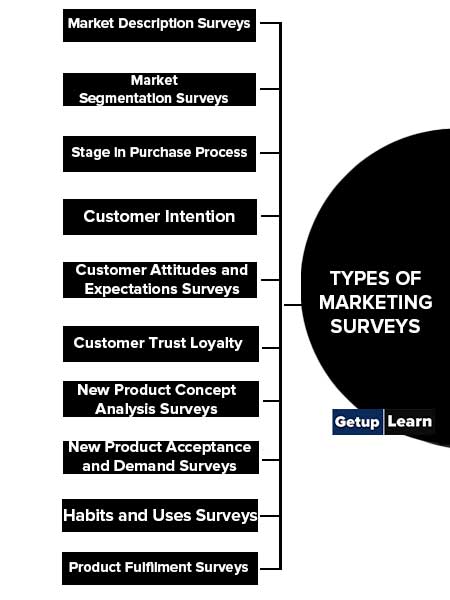
Market Description Surveys
To determine the size and relative market share of the market. Such studies provide key information about market growth, competitive positioning, and tracking share of the market.
Market Segmentation Surveys
To identify who the customers are, who they are not, and why they are or are not your customers. This is often a descriptive market segmentation and market share analysis.
Stage in Purchase Process
Where is the customer in the adoption process? This information shows market Awareness Knowledge –Intention – Trial – Purchase – Repurchase of the product.
Customer Intention
Purchase Analysis Surveys Directed at understanding the current customer. What motivates the customer to move from interest in the product to actual purchase? This is a key to understanding customer conversion, commitment, and loyalty.
Customer Attitudes and Expectations Surveys
Does the product meet customer expectations? What attitudes have customers formed about the product and/or company? Used to direct advertising and improve customer conversion, commitment, and loyalty.
Customer Trust Loyalty
Especially for high-priced consumer goods with the long decision and purchase processes (time from need recognition to purchase), and depth of consumer attitudes formed about the product and/or company.
New Product Concept Analysis Surveys
Concept test studies are appropriate in the initial screening of new product concepts. Likes and dislikes about the concept and evaluation of acceptability and likelihood of purchase are especially useful measures.
New Product Acceptance and Demand Surveys
Primarily for estimating demand for new products that can be described or have been developed in drawing or concept, but have not yet been developed physically. Develops develop market share estimates of market potential for the alternative potential products.
Habits and Uses Surveys
Directed at understanding usage situations, including how, when, and where the product is used. Habits and uses studies sometimes include a real or virtual pantry audit.
Product Fulfilment Surveys
Evaluation of the product‘s promised bundle of benefits (both tangible and image). Are expectations created for the product by advertising, packaging, and the product appearance fulfilled by the product?
Product Positioning Surveys
A Best Practices‖ study of ―How does the market view us relative to the competition?‖ Competitive positioning analyses often compare the attributes and benefits that make up the product using multidimensional scaling
.
Brand Equity Analysis Surveys
What is the psychological value that a brand holds in the marketplace? Brand equity is a composite of brand awareness, brand quality, brand associations, and brand loyalty measures.
Advertising Value Identification and Analysis Surveys
Advertising value analysis focuses on mapping the hierarchical attributes, benefits, and values that are associated with and portrayed by an advertisement. The means-end analysis is often part of this type of study.
Advertising Message Effectiveness Surveys
Message effectiveness testing identifies the impressions, feelings, and effectiveness in moving the respondent to the desired goal (increased awareness, more product information, trial, repeat purchase).
Sales Force Effectiveness Surveys
A combination of measures that focus on the sales activities, performance and effectiveness in producing the desired and measurable effect or goal. Often measured as a 360-degree survey completed by the salesperson, the client (evaluating the sales call), and the supervisor responsible for evaluating the salesperson.
Sales Lead Generation Surveys
Sales to lead generation surveys for (1) assuring timely use and follow-up of sales leads, (2) qualifying sales leads (thereby saving valuable sales force time), and (3) providing more effective tracking of sales leads.
Customer Service Surveys
Akin to customer satisfaction surveys, but focus in detail on the actual customer service that was received, the process involved in receiving that service, and the evaluation of the participants in the service process.
Customer Service Representative (CSR) Surveys
Attitudes, Burnout, Turnover, and Retention: CSRs hold attitudes that reflect on their job-related activities including (1) the allocation of time; (2) solutions to customer needs; (3) how to improve their job; (4) best practices; (5) How well internal departments help customers. CSRs often exhibit frustration, burnout, and high turnover and surveys focus on CSR retention, reducing costs, and increasing the quality of customer relationships.
Sales Forecasting and Market Tracking Surveys
Sales forecasting and market tracking studies can include expert opinion (experts estimate the market), judgmental bootstrapping (expert-based rules describing how to use available secondary market information), conjoint analysis (estimation of consumer intentions based on product attributes that are important in the decision), and intentions evaluations (consumer self-reported intentions of future purchases) are to be made.
Price Setting Surveys and Elasticity of Demand Analysis
Price surveys estimate the elasticity of demand and show optimal price points, including prices too low or too high. Price surveys may estimate the demand for different product or service segments, or different usage situations.
Applications of Marketing Research
Following are number of examples on the applications of marketing research. They clearly bring out how marketing research has been helpful in resolving marketing problems or in identifying opportunities for the development of new products.
Following are number of examples on the applications of marketing research. They clearly bring out how marketing research has been helpful in resolving marketing problems or in identifying opportunities for the development of new products.
- Pharmaceutical Company
- Malayala Manorama
- Cadbury India Limited
- Procter and Gamble (P&G)
- Development of a New Product
- Pepsi Foods
- Whirlpool Asia
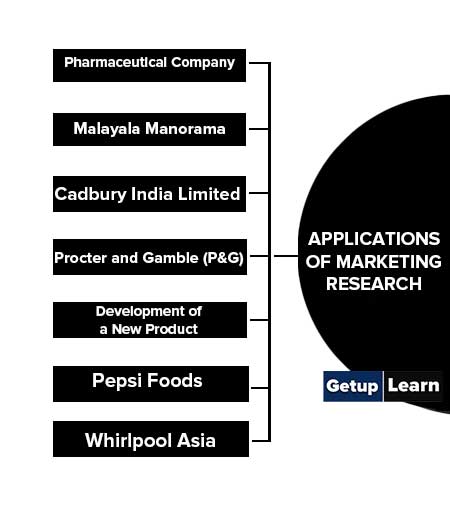
Pharmaceutical Company
A pharmaceutical company carried out a study on the prescription behaviour for a major brand on account of its declining sales. The study brought out interesting findings on a number of aspects such as the relationship between the sales and the age of the brand, its regular promotion, its core therapeutic emphasis and the role of retailers in servicing prescription.
On the basis of findings of the study, the company changed its marketing strategy. This enabled it to regain the lost market share of its brand.
Malayala Manorama
Malayala Manorama, which is Kerala’s largest publication group, has recently launched a monthly women’s magazine in Hindi, Vanita. While launching this magazine, the management observed that it was convinced through market research that there was a huge vacuum in the Hindi magazine segment.
This new magazine Vanita has been positioned as a partner and friend that the modern woman can identify with. The first print run of Vanita was one lakh copies. Indications are that within a short time it may become one of the popular Hindi magazines.
Cadbury India Limited
Cadbury India Limited launched Picnic from its international portfolio in February, 1998. It is wrapped in vibrant colours of red, blue and yellow in conformity with its international packaging. Earlier, Cadbury Indian Limited commissioned a consumer research study in Mumbai.
The results of this study were encouraging and showed that the Indian youth is always interested in experimenting with new food options.
Procter and Gamble (P&G)
Procter and Gamble (P&G) launched Menthol, an international vibrant of Head & Shoulders. This joins the extra- conditioning anti-dandruff shampoo of the same brand. The company conducted a market research study prior to its launch.
The findings of the study indicated a distinct need for a menthol-based shampoo. The study showed that in hot and humid conditions as in India, consumers prefer a shampoo which not only removes dandruff but also provides a cool and tingling sensation to the scalp.
Development of a New Product
Another example from P&G shows how marketing research is used to identify new opportunities in the marketplace. The company was getting a lot of data on Vicks-Vaporub. The analysis of such data revealed that the most common symptom of cold was a headache and that majority of adults typically take a pill to cure it.
This disclosed an opportunity for a product that can treat the headache as well as the other symptoms. The company thus launched Action 500. It not only treated headache but also gave relief from blocked nose. Marketing research can therefore lead to the development of a new product.
Pepsi Foods
Pepsi Foods has assigned great importance to marketing research. Through research it gets systematic information about its markets and its customers. All its research is done by the IMRB. Broadly, research studies done for Pepsi Foods fall in the following three areas:
- Studies undertaken on a continuous basis like marketing tracking studies and retail audits.
- Studies are from time to time as per the requirement of the company such as a study to ascertain the effectiveness of an ad campaign.
All these types of research studies have tremendously helped Pepsi Foods to strengthen its position in the market. It feels the pulse of the market and is always in touch with the latest developments in the market.
Whirlpool Asia
Another mu1tinational company Whirlpool Asia lays considerable emphasis on marketing research. In this company, every activity, strategy and decision is based on data collected through the research process. It believes in planning research in advance though it is rather difficult.
It strives to have a meaningful dialogue with the consumer in order to know his real opinion about its products, what difficulties he experiences and what suggestions he has to offer. Information thus received proves to be quite useful to the company in modifying its products or in evolving new ones.
Whirlpool has gained an insight into the various segments in the market. In India, it has segmented the market on the basis of the different stages of the product life cycle. Decisions like which size of refrigerator should be put in the market or what should be the price of a particular model are based on research. Marketing and Research Group (MARG) has been the main marketing research agency for Whirlpool.
What are the 10 steps of the marketing research process?
Process of marketing research:
1. Formulating Research Problem
2. Extensive Literature Survey
3. Developing Hypothesis
4. Preparing Research Design
5. Determining Sample Design
6. Collecting the Data
7. Analysis the Data
8. Testing of Hypothesis
9. Writing Interpretation
10. Preparation of Research Report.
What are the types of market survey?
Following are the types of market survey:
1. Market Description Surveys
2. Market Segmentation Surveys
3. Stage in Purchase Process
4. Customer Intention
5. Customer Attitudes and Expectations Surveys
6. Customer Trust Loyalty
7. New Product Concept Analysis Surveys
8. New Product Acceptance and Demand Surveys
9. Habits and Uses Surveys
10. Product Fulfilment Surveys.

